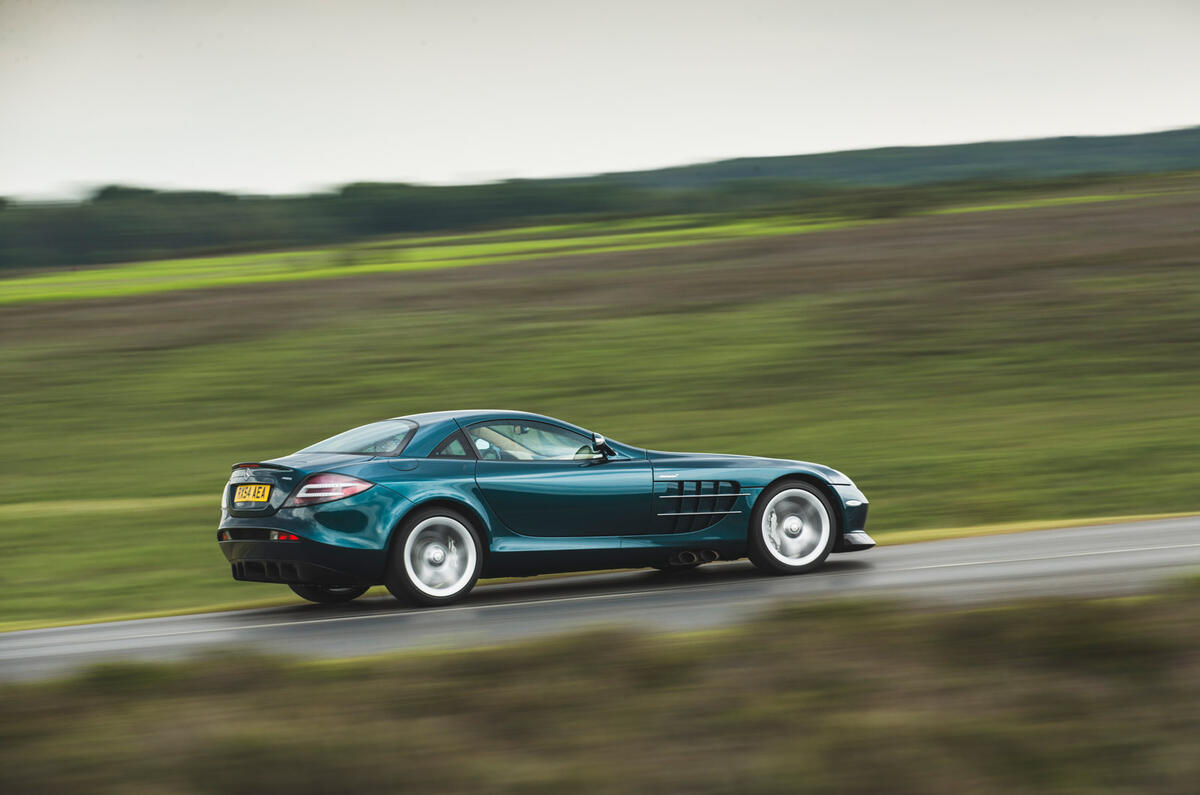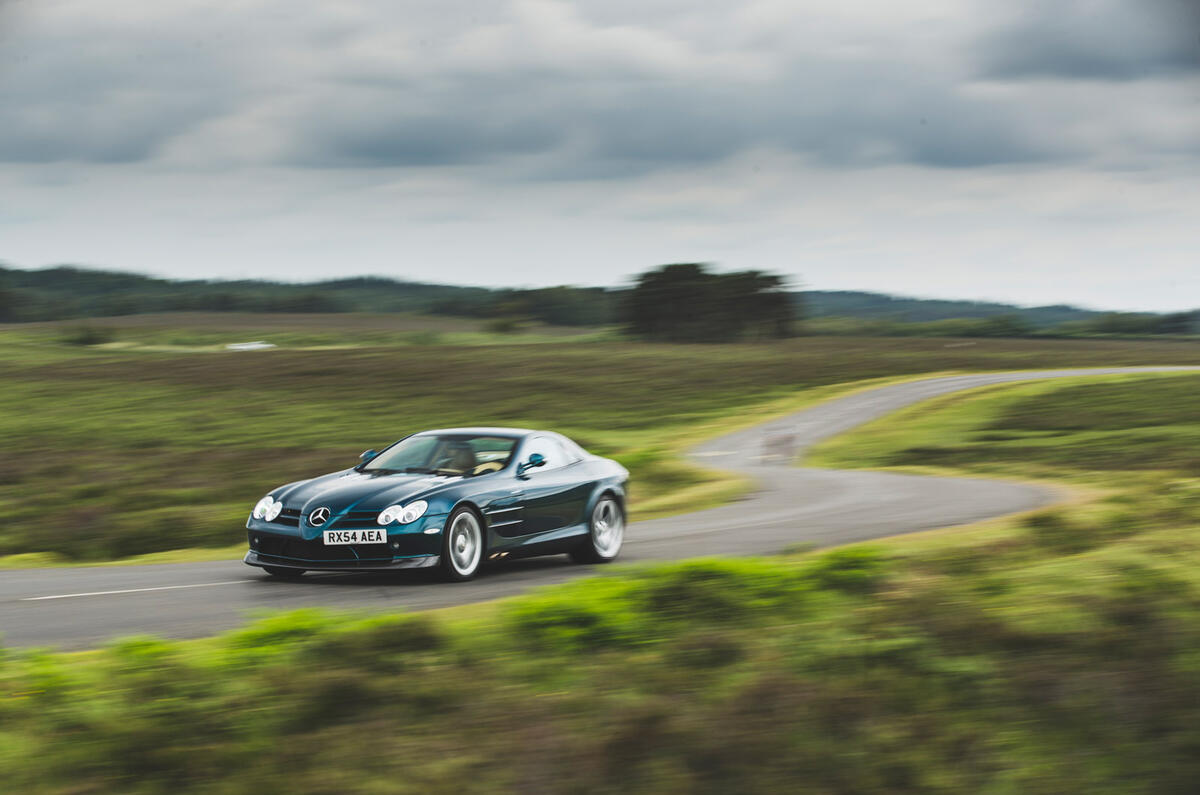The kraken has awoken. That’s the nickname that the good people of McLaren Special Operations (MSO) have given to their lately updated version of the deliciously mad, fire-breathing, front-engined supercar that many of them actually helped to produce more than a decade ago.
They did it under a brief that McLaren didn’t write, of course; in circumstances that many in the company might not have chosen; and for a very different customer than the one for which the modern McLaren Automotive now caters. And yet it happened; it lived. And what a thing it remains. Earplugs at the ready then, folks, for the still bonkers-looking and now even more bonkers-sounding Mercedes-Benz SLR McLaren… by MSO.
This is a car so unlike any that the subsequently founded McLaren Automotive has made since that, to look at it, you might not believe there could be any association between them. The SLR is long and low, noisy and nosey and cartoonishly extravagant. There’s a thundering supercharged V8 under its huge, cantilevered bonnet, and the rest of the car looks like it’s somehow being sucked along behind it.
It has that instantly recognisable, almost naive 1990s sci-fi look about it, as if it’s being spaghettified in a Wachowskis film or jumping to warp speed to do battle with a Romulan warbird. But while it was clearly intended to reference the 300 SLR sports car racer of the 1950s, the SLR was much less retro than Mercedes’ own SLS AMG that came after it. It may not be as pretty as the SLS, but it’s so much more original.

The SLR was designed as a wide-eyed concept by Mercedes, of course; as a defiant statement of confidence just after the big Daimler Chrysler merger and in the run-up to Mercedes’ own centenary. And it was then made real, out of carbonfibre and aluminium and lots of sums, by the superhuman brain of McLaren’s Gordon Murray, who only recently talked so fascinatingly about the circumstances of its creation.




































Join the debate
Add your comment
Love the SLR and see no need to change anything, unless you plan to track it. Given the work is done by McLaren, I can understand the attraction though. It would however be sacrilege, and an expected loss on investment, if the car was modded by a third party - it's just too special and expensive.
Well, that was a long read, most of which could have been said in a couple of paragraphs,MSO are charging you, if your up for it, the price of a decent sports car, to stick on some new bits that do little for the Cars overall performance, I don't care if they're going to rise in value, how long before you get your investment back plus interest?
This was one of Le most briLLiants cars ever. Mercedes McLaren SLr, Swooping Looks, Like you say.